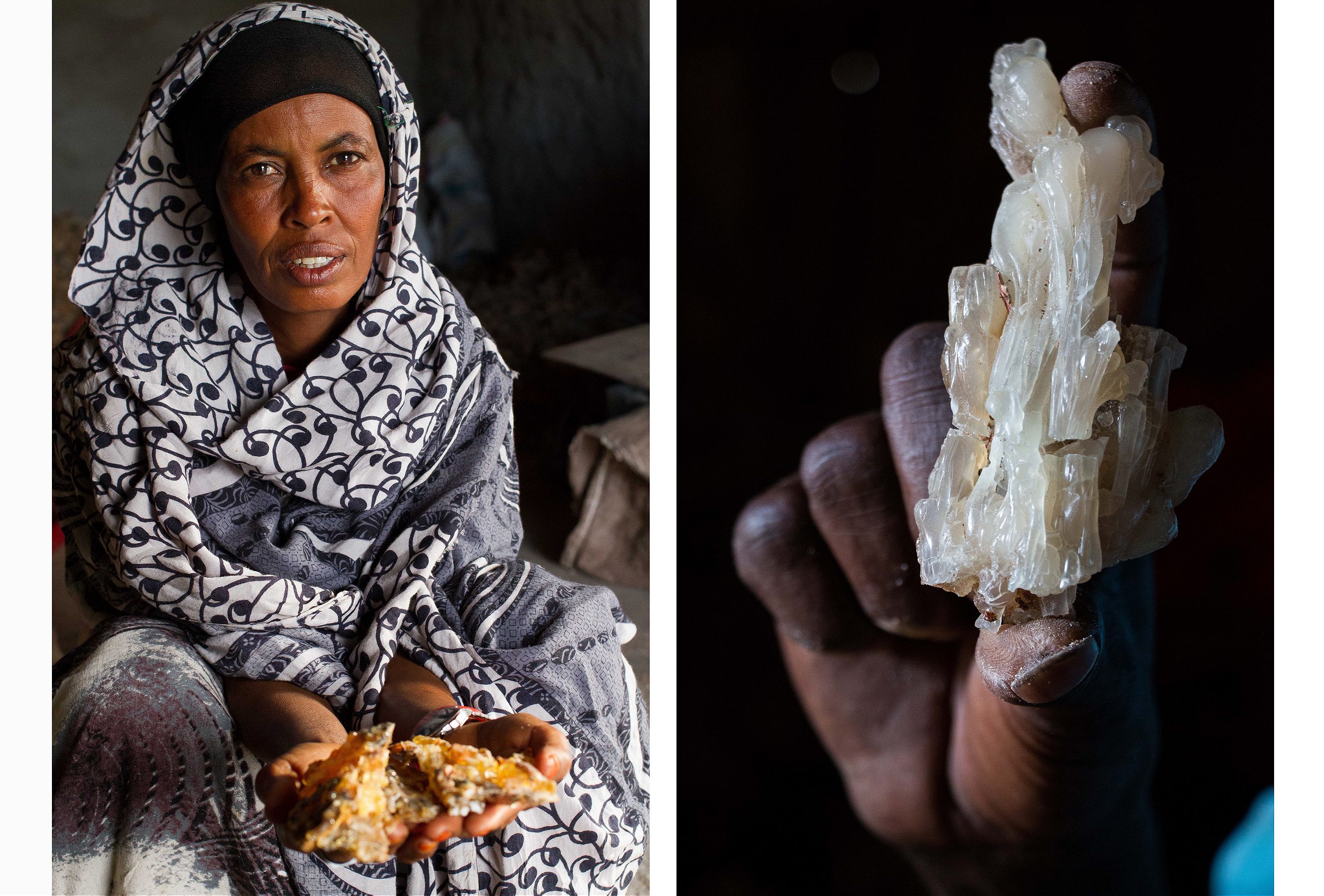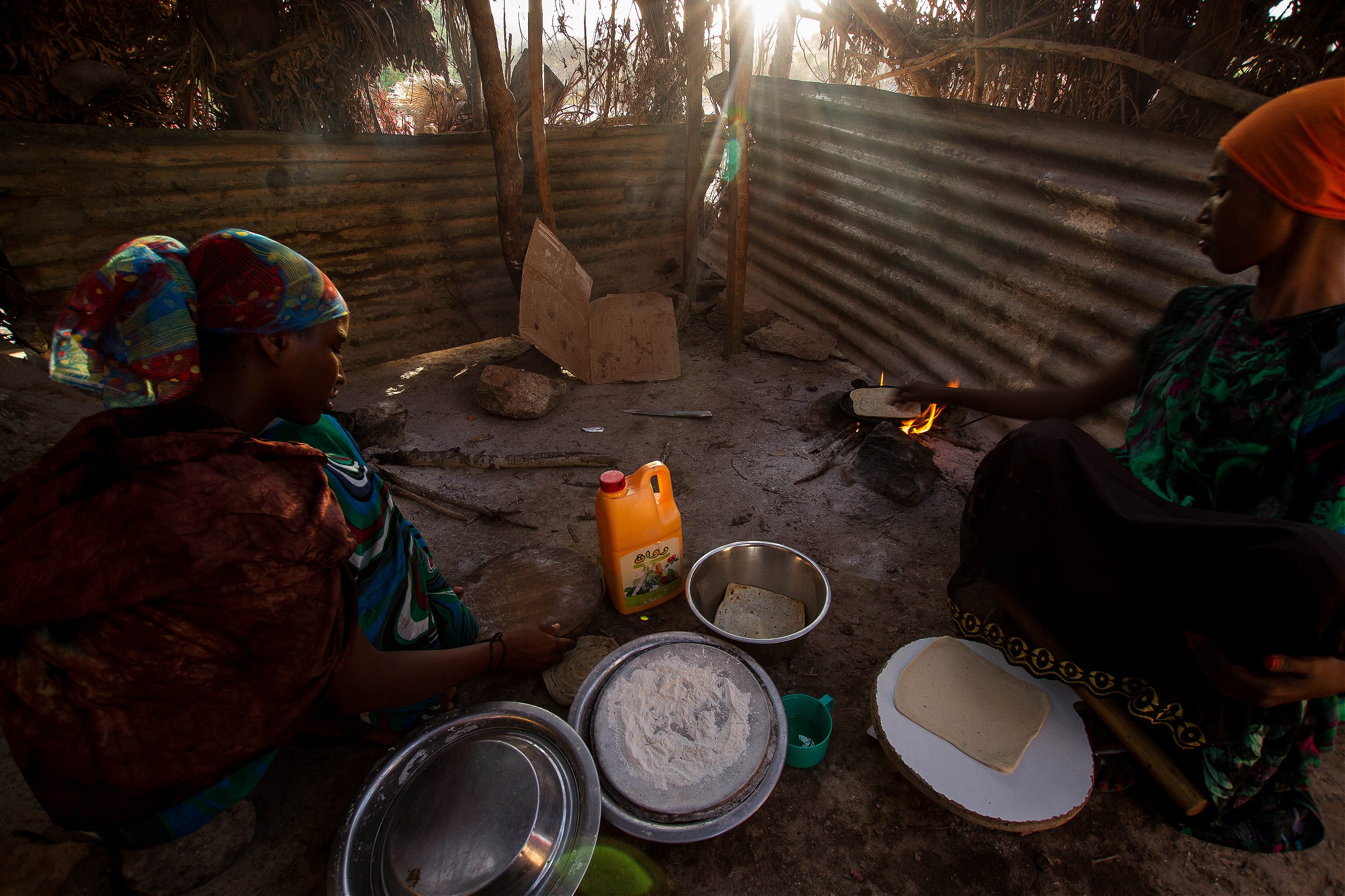The isolated territory of Somaliland sees the industry as both a blessing and a curse.
High up on a steep, rocky hillside, thin, young men clamber deftly among the branches of small trees. Each of them—t-shirts torn and feet wrapped in cloth against the thorns—carries a basket and chisel.
A sticky sap seeps from slices in the bark of these Boswellia frereana and carterii trees, which grow wild in the rugged hills of Somaliland, a fragile, self-declared territory in northern Somalia. Over several weeks, the sap will harden into clots of amber resin called frankincense.
“I have done this work for 20 years,” says Musa Hassan, pointing to the trunk of one tree where wounds in the bark bleed sap which is still viscous but hardening. He demonstrates how, once the sap is dry, he will chip it away into his basket.
“My father and grandfather did the same. It is dangerous in the trees but we cannot earn money another way here.”

Frankincense is a fragrant, ancient resin that has been used for 5,000 years. In the Bible, it was offered with gold and myrrh by the three kings at the birth of Christ. It originally hails from the Horn of Africa and southern Arabian peninsula, but has found uses throughout the world.
Hassan earns around five dollars per kilogram of raw frankincense sold. He harvests a couple of times a year and packs the resins into 50-kilogram sacks that are loaded onto rickety trucks and driven out of the mountains to market towns like Erigavo and Burao.
“Frankincense is one of our most important natural resources,” says Somaliland’s environment minister, Shukri Ismail. Global demand for the resin is on the rise. Frankincense is used in perfumes and cosmetics in Europe, herbal medicines worldwide, and to flavor chewing gum across the Middle East. According to Ismail, the resin represents the territory’s third-largest export.

“Somaliland frankincense is the prized one,” says Waheed Chaudry, a Kenya-based merchant whose company, Lubanchem, sources 40 percent of its frankincense in Somaliland and the neighboring semi-autonomous region of Puntland. Chaudry distills the essential oil to sell to purchasers in Europe and Asia.
“But those communities are the most vulnerable and isolated,” he adds. Despite more than two decades of breakaway independence, Somaliland remains internationally unrecognized and economically isolated, which makes it hard for outside companies to invest securely.
Almost all of the process is done by hand. Men scale the cliff sides while women spend hours in gloomy storerooms cleaning and grading the resins.
“All quality of frankincense comes to us in the same sack,” says Luul Chama, who employs 20 women at a store-house in the regional hub of Erigavo. “The girls must remove the bark and stones and then separate the resins by their quality. It’s difficult, but women are the most patient.”

Pay is meager and conditions harsh. On average, a woman earns the equivalent of two or three dollars per kilo of frankincense; her daily wage depends on how many kilos she can get through.
Somaliland’s resin trade employs more women than any other formal industry, according to environment minister Ismail. “Women are the breadwinners of this country,” she says. “When it comes to frankincense they are in the middle of it, they are literally the backbone for their families. Men usually don’t have the patience to sit and sort, but women—from morning to five o’clock—they will be there trying to earn what they can.”

The future, however, does not look bright. Somaliland, despite a contested border with Ethiopia, is relatively stable, but it is also at the heart of a region on fire. Conflict rages in southern Somalia and across the Gulf of Aden in neighboring Yemen.
Climatic disruption and increasingly unpredictable rains have also ravaged the Horn of Africa. Research indicates that the Boswellia tree is disappearing so fast it could be all but extinct within 50 years unless an environmental intervention is mounted.
As demand for frankincense increases globally, harvesters are forced to tap the trees more often, which renders them weaker, less fertile, and more at risk of disease. And because much of Somaliland is considered inaccessible and unsafe, next to no research is being conducted on the state of the Boswellia species, nor are there large-scale programs aimed at forest restoration, management or sustainable frankincense production.

The village of Madar Moge only exists because of its proximity to a Boswellia forest beneath the breathtaking Daallo escarpment. Mohamed Ahmed Ali, whose family manage a small segment of this forest, fears for what’s to come.
“We inherited these forests from our ancestors,” he says, “but the trees are less because people are not taking care, they come from outside and are not familiar with the cutting. They cut too deep and the tree dries up.”
Villagers from Madar Moge are aware that their forests are shrinking but alternative sources of income are few. Ali is fortunate; he maintains small fishing boats on the coast for additional income to support his family of 10. Yet it’s not enough for him to give up frankincense production. For now, no one really knows the true scale of the destruction.